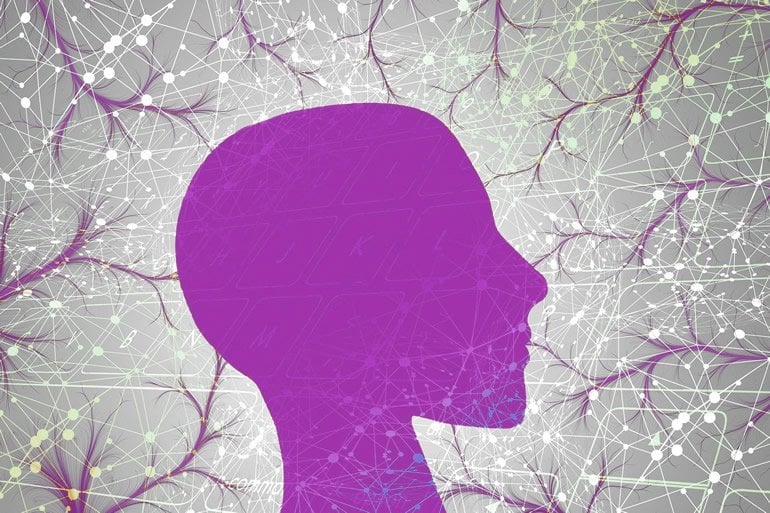Summary: Reassessing years of research on Theory of Mind in autism, researchers argue the brains of those with ASD may be able to grasp what others think but may have a more difficult time processing the degree to which others think differently from themselves.
Source: Ghent University
Tracking the extent to which other people think differently from yourself appears to be more relevant than understanding someone else’s thoughts per se. Neuroscientists at Ghent University and the University of New South Wales (Sydney) came to this conclusion.
Through a systematic review and critical analysis of more than 50 neurological imaging studies, they found that one of the main areas of the brain we use to understand others is active in detecting differences between what you think and what others think. In the past, this brain area was believed to be mainly active in understanding what others think. They call their new theory of human social cognition “relational mentalizing.”
Dr. Eliane Deschrijver says, “No two people ever see or experience the same events in exactly the same light. In fact, in any conversation, minor differences in thinking happen all the time: Someone may be telling you about a situation with their boss, while you were actually thinking of changing the topic to your cat. If one isn’t on the same page with another person, the brain may need to process this, and then determine whether to rephrase one’s own thoughts or focus onthe other’s. It can crucially determine the flow of any social interaction.”
Autism
The brain region that according to the researchers is responsible for detecting differences between your understanding of others’ thoughts and what you think yourself is called the temporoparietal junction. This brain region is often less active in people on the autism spectrum.
After re-assessing other findings from 35 years of Theory of Mind research in autism, the researchers argued that the brain in people on the spectrum may be able to grasp what others think, but then may have a harder time processing the degree to which others think differently from themselves.

Dr. Deschrijver says, “If they notice another person trying to steer away the conversation towards an own interest, for instance, individuals on the spectrum may not entirely process a mismatch in thinking as a cue to stop talking. This can lead them to overshare their own thoughts. The opposite may happen, too: Understanding the other’s different thoughts may keep an individual on the spectrum from verbalizing their own thoughts, even if that were socially expected. Differences in engaging in back-and-forth conversation are thought to lie at the heart of the autism spectrum.”
Out with Theory of Mind?
The new theory also changes our understanding of complex social interactions such as lie detection, moral judgments, and the understanding of sarcasm and humor. Recognizing that a person is sarcastic, for instance, when they call the weather “beautiful!” while it is raining, may well depend on detecting a mismatch between this person’s statement and one’s own understanding of the world. If “mindreading” is less important than we thought, the “relational mentalizing” theory spawns many new research questions.
About this autism research article
Source:
Ghent University
Contacts:
Press Office – Ghent University
Image Source:
The image is in the public domain.
Original Research: Closed access
“Reframing social cognition: Relational versus representational mentalizing” by Eliane Deschrijver et al. Psychological Bulletin.
Abstract
Reframing social cognition: Relational versus representational mentalizing
The most dominant theory of human social cognition, the theory of mind hypothesis, emphasizes our ability to infer the mental states of others. After having represented the mental states of another person, however, we can also have an idea of how well our thinking aligns with theirs, and our sensitivity to this alignment may guide the flow of our social interactions. Here, we focus on the distinction between “mindreading” (inferring another’s mental representation) and detecting the extent to which a represented mental state of another person is matching or mismatching with our own (mental conflict monitoring). We propose a reframing for mentalizing data of the past 40 years in terms of mental conflict monitoring rather than mental representation. Via a systematic review of 51 false belief neuroimaging studies, we argue that key brain regions implicated in false belief designs (namely, temporoparietal junction areas) may methodologically be tied to mental conflict rather than to mental representation. Patterns of false belief data suggests that autism may be tied to a subtle issue with monitoring mental conflict combined with intact mental representation, rather than to lacking mental representation abilities or “mindblindness” altogether. The consequences of this view for the larger social–cognitive domain are explored, including for perspective taking, moral judgments, and understanding irony and humor. This provides a potential shift in perspective for psychological science, its neuroscientific bases, and related disciplines: Throughout life, an adequate sensitivity to how others think differently (relational mentalizing) may be more fundamental to navigating the social world than inferring which thoughts others have (representational mentalizing).







